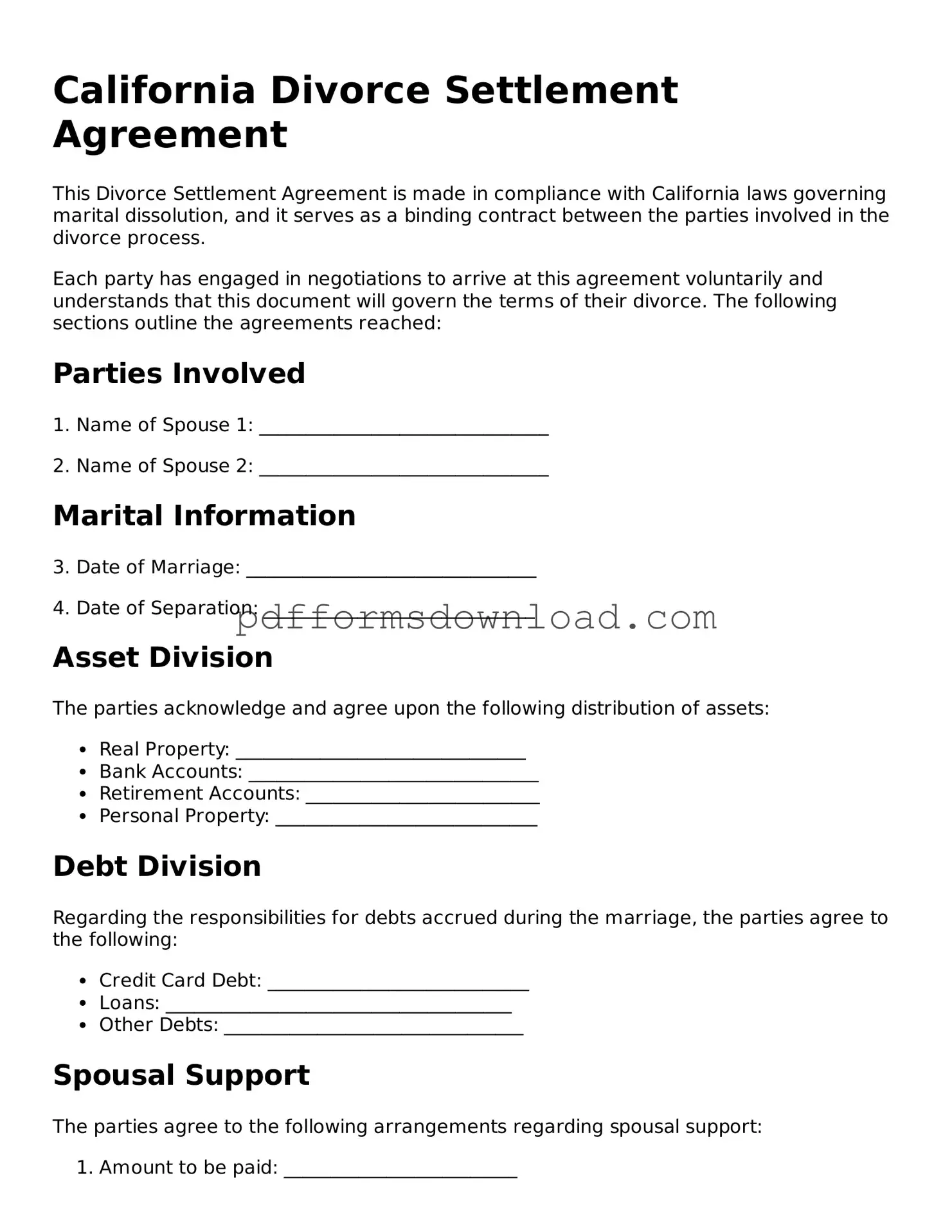What is a California Divorce Settlement Agreement?
A California Divorce Settlement Agreement is a legally binding document that outlines the terms agreed upon by both spouses during the divorce process. This agreement covers important aspects such as property division, child custody, child support, and spousal support. It serves to ensure that both parties have a clear understanding of their rights and responsibilities following the divorce.
How do I create a Divorce Settlement Agreement?
To create a Divorce Settlement Agreement, both parties should first discuss and negotiate the terms they wish to include. It is advisable to document all agreements in writing. You can use templates or forms available online, but it’s often beneficial to consult with a legal professional to ensure that the agreement complies with California laws and addresses all necessary issues.
Is a Divorce Settlement Agreement required in California?
While a Divorce Settlement Agreement is not legally required, it is highly recommended. Having a written agreement helps prevent future disputes and provides clarity on how issues will be handled post-divorce. If the parties cannot reach an agreement, the court will make decisions for them, which may not align with their preferences.
What happens if one party does not comply with the agreement?
If one party fails to comply with the terms of the Divorce Settlement Agreement, the other party can seek enforcement through the court. This may involve filing a motion to compel compliance or requesting a modification of the agreement. Courts take these agreements seriously, and non-compliance can lead to legal consequences.
Can a Divorce Settlement Agreement be modified?
Yes, a Divorce Settlement Agreement can be modified under certain circumstances. If there is a significant change in circumstances, such as a change in income or relocation, either party can request a modification. However, both parties must agree to the changes, or the requesting party must demonstrate to the court that a modification is necessary.
How long does it take to finalize a Divorce Settlement Agreement?
The time it takes to finalize a Divorce Settlement Agreement varies based on the complexity of the issues involved and the willingness of both parties to negotiate. If both parties can reach an agreement quickly, it may take only a few weeks. However, if there are disputes or complications, the process could take several months. It is important to be patient and thorough to ensure all issues are adequately addressed.
